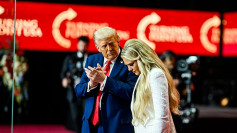The U.S. State Department began issuing more than 1,350 termination notices on Friday as part of a sweeping reorganization under Secretary of State Marco Rubio, marking the most significant reduction in force in modern diplomatic history and sparking widespread concern across Washington's foreign service community.
According to internal notices and statements confirmed by senior officials, the department is terminating 1,107 civil service employees and 246 foreign service officers in Washington, D.C., as part of the Trump administration's plan to "streamline domestic operations." The restructuring, authorized after a Supreme Court ruling lifted an injunction on mass federal firings, is expected to ultimately eliminate nearly 3,000 positions through both forced layoffs and voluntary resignations.
"In connection with the Departmental reorganization first announced by the Secretary of State on April 22, 2025, the Department is streamlining domestic operations to focus on diplomatic priorities," read the official internal notice obtained by CNN.
The notice emphasized that reductions were "carefully tailored to affect non-core functions, duplicative or redundant offices," but the cuts come amid escalating global crises in Ukraine, the Middle East, and East Asia, raising alarms among career diplomats and national security experts.
"At a moment of great global instability - with war raging in Ukraine, conflict between Israel and Iran, and authoritarian regimes testing the boundaries of international order - the United States has chosen to gut its frontline diplomatic workforce," said the American Foreign Service Association in a statement.
The reorganization effort has reportedly affected 15% of the State Department workforce and prompted frustration inside Foggy Bottom. "Morale has been rock-bottom since they announced [the reorganization]," a diplomat told The Guardian. "I think for some people the fact it is finally happening is a relief but it's awful."
Foreign service officers receiving Reduction in Force (RIF) notices are being placed on administrative leave for 120 days, while most civil service employees will be put on 60-day leave before their terminations take effect. Secretary Rubio, who was en route from Malaysia as the notices went out, has defended the cuts as necessary to eliminate bureaucratic bloat and realign priorities with President Trump's "America First" foreign policy doctrine.
The reorganization is being implemented in "probably the most deliberate way of anyone that's done one," Rubio said Thursday.
A senior State Department official told reporters that the plan was designed to target functions, not individuals. "If a particular function was being performed that was no longer aligned with what the department was going to be doing going forward, that function was being eliminated. It was personnel agnostic."
The agency's ability to process the firings was reportedly hampered by internal systems. Karl Stoltz, co-president of the Public Diplomacy Council of America, told members that a technical bottleneck in the RIF software had resulted in "rolling RIFs" instead of a coordinated email dispatch. The department denied any malfunction. "We did not have plans for one big email blast at a specific time, and did not indicate any such time to the workforce," a senior official said.
Employees and advocacy groups held a gathering at the State Department on Friday afternoon to "clap out" those dismissed and protest the administration's actions.






